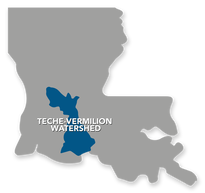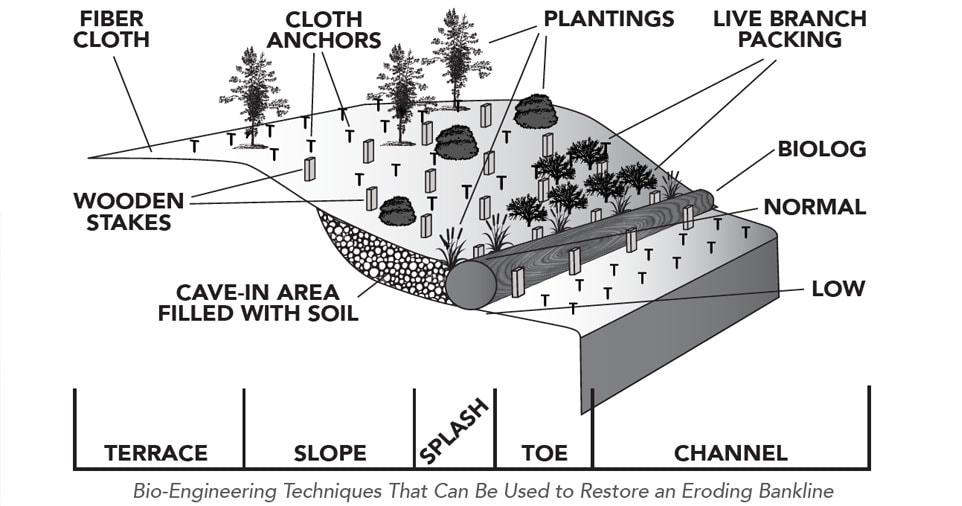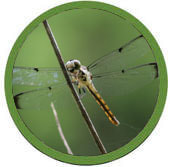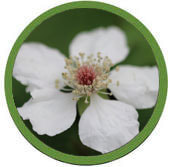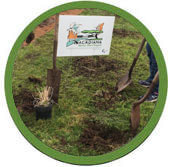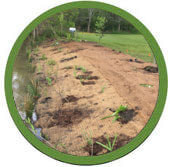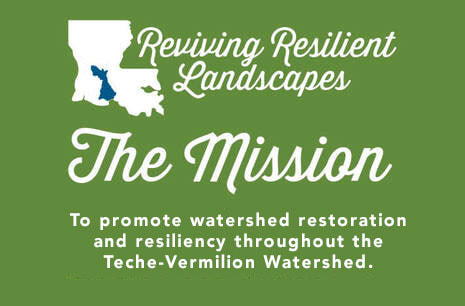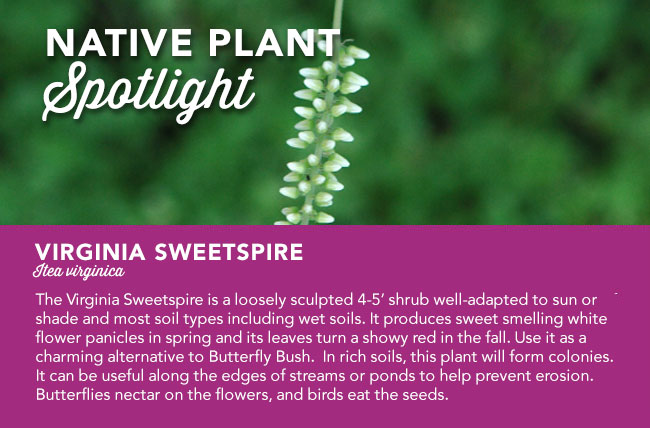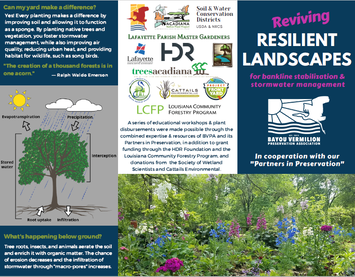A LOCAL WATERSHED RESTORATION INITIATIVEEven the smallest patches of native landscaping can make a big difference to wildlife, air and water quality, and the communities within the Teche-Vermilion Watershed. As a member of our watershed community, YOU can make a difference. Reviving Resilient Landscapes fosters community-led efforts by combining the resources, people power, and knowledge of conservation groups across the region.
|
In spring of 2019, a planting plan was developed by volunteer environmental scientists to address erosion near the high-traffic boat launch and to add wildlife value in an urban area. The landscape design included the installation of coco-mats, a biodegradable material used to stabilize the soils, and native plant species that naturally occur along the banks of Bayou Teche. Unfortunately, several prolonged flood events occurred immediately after the planting, and some of the species along the bank did not survive. In spring of 2020, our partners in preservation developed another planting plan to establish native plants along the bankline. On May 16, 2020, volunteers from the BVPA, TECHE Project and Boy Scouts of America planted more native plants along the bank. Landscaped with resiliency in mind, the 30 species comprising the bankline will continue to contribute to a healthy watershed for years to come.
RIPARIAN BUFFER ZONE
SLOW THE FLOW TO MINIMIZE EROSION
During a rain event, stormwater enters drainage systems and receiving waterways at unnaturally high volumes. Known as stormwater runoff, the fast moving water causes erosion and results in land-loss and increased downstream flooding. Native trees and plants can be used in developed areas to manage stormwater, reducing the volume of runoff entering drainage systems. This type of stormwater management, coupled with reestablishing native trees and other native plants along banklines, will protect critical habitat, prevent land-loss, maintain natural channel depths, and protect water quality in our communities.
During a rain event, stormwater enters drainage systems and receiving waterways at unnaturally high volumes. Known as stormwater runoff, the fast moving water causes erosion and results in land-loss and increased downstream flooding. Native trees and plants can be used in developed areas to manage stormwater, reducing the volume of runoff entering drainage systems. This type of stormwater management, coupled with reestablishing native trees and other native plants along banklines, will protect critical habitat, prevent land-loss, maintain natural channel depths, and protect water quality in our communities.
During a rain event, stormwater enters drainage systems and receiving waterways at unnaturally high volumes. Known as stormwater runoff, the fast moving water causes erosion and results in land-loss and increased downstream flooding. Native trees and plants can be used in developed areas to manage stormwater, reducing the volume of runoff entering drainage systems. This type of stormwater management, coupled with reestablishing native trees and other native plants along banklines, will protect critical habitat, prevent land-loss, maintain natural channel depths, and protect water quality in our communities.
| Download our Brochure.pdf | |
| File Size: | 1982 kb |
| File Type: | |
Our "Partners in Preservation"


